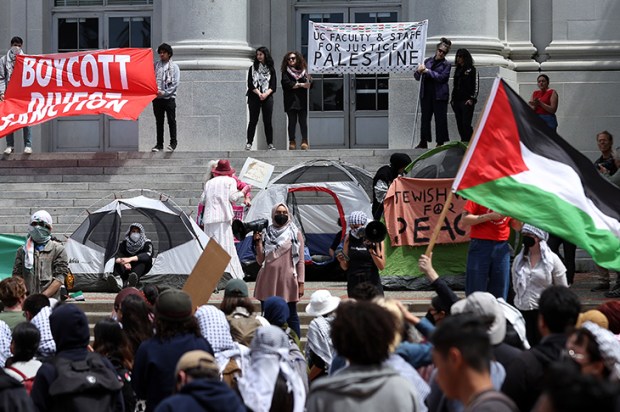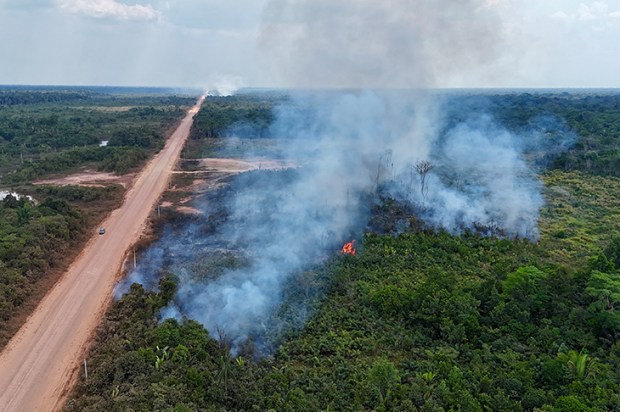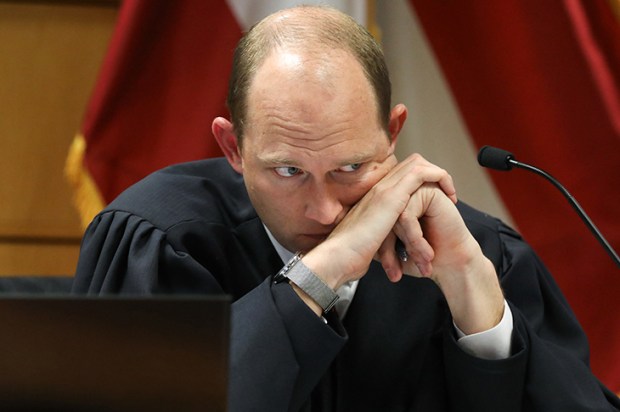Jim Chalmers’ fourth budget – the one he didn’t want to deliver before this year’s election – presents a grim picture of the damage Labor has done to Australia’s economy in the last three years.
The budget forecasts gross debt will cross the trillion-dollar threshold in the next financial year, and a sea of red ink extends as far as the Treasury boffins can see.
That’s despite record tax revenue, thanks to a boom in the price and volume of fossil fuel exports during the energy crisis created by Russia’s invasion of Ukraine.
Mining is estimated to contribute $121 billion in federal corporate tax revenue from mid-2022 to mid-2025, with coal contributing $39 billion to federal government coffers and gas paying $22 billion in federal taxes.
Labor is using that windfall revenue to finance a green energy Ponzi scheme with no prospect of economic viability.
In the last three years, it allocated around A$27 billion in subsidies, investments and funding for renewable energy, clean energy finance, climate resilience and adaptation, and international climate finance.
This largesse has funded a renewable energy sector built entirely on government subsidies, price mandates, regulatory support, and guaranteed revenue via long-term power purchase agreements, feed-in tariffs and floor-price guarantees.
Yet renewables still can’t get off the ground without direct and indirect subsidies of billions of dollars in grants, concessional loans, tax incentives, and state subsidies for renewable energy zones, transmission upgrades, and capital grants. Grid access to connect remote solar and wind farms is also publicly funded or subsidised.
What has Australia got in return? Power prices that – despite a promised $275 reduction – have risen 20 to 40 per cent since the 2022 election, notwithstanding the federal government funding $7 billion in subsidies just to get it through the next election.
That’s not the end of Labor’s bonfire of the vanities. Green hydrogen is a central component of Labor’s Future Made in Australia plan. So far, the only thing that government investment in green hydrogen is powering is inflation through reckless funding of a technology that cannot survive without government subsidies.
Over the last three years, Labor has introduced the Hydrogen Production Tax Incentive, the Hydrogen Headstart Program, and the National Hydrogen Strategy Implementation, yet nothing in the $100 billion green hydrogen supply pipeline has got beyond a pipe dream.
Eight major hydrogen projects have been cancelled, deferred or collapsed over the last decade in Australia. The most recent is the Trafigura green hydrogen plant in Port Pirie, cancelled just days after the Prime Minister pledged it would underpin Labor’s Future Made in Australia plan. Others include the Whyalla Hydrogen Plant, the Crystal Brook Energy Park, the Central Queensland Hydrogen Project, the Hunter Valley Hydrogen Hub, the HyEnergy Project, the H2TAS Project, and the Gladstone Hydrogen Project.
Mr Albanese still claims green hydrogen will be a major export -industry by 2030, and Mr Bowen says the industry is thriving despite the ‘odd setback’, yet even the editor of RenewEconomy, the Pravda of renewable energy, has admitted that, ‘Hydrogen is being hyped far beyond its likely usefulness.’
The reality that everyone, except Labor, admits is that green hydrogen is up to four times more expensive than ordinary hydrogen, hard to transport, store, or use in cars, homes, or mainstream electricity generation, and dumping public money into green elephants that don’t stack up commercially is a waste of money.
All this has simply inspired Mr Bowen to add an additional $8 billion in the latest budget to the $2 billion already allocated.
The second road to economic ruin under Labor is wasteful and whacky spending. A report by the Menzies Research Centre, Stop the Bloat, released last weekend, highlighted government funding for an Anti-Racism Dentistry Curriculum, a Decolonising Breastfeeding Program, an art exhibition using souvenir tea towels to challenge racial stereotypes, and funding for drag shows for scientists.
Yet this waste is a mere sideshow compared to spending on the National Disability Insurance Scheme, which is victim to who knows how much fraud, and the 20-per-cent cut to the Higher Education student debt – that will cost $16 billion over the next four years – and is being hidden off-budget along with other so-called ‘investments’ in the National Broadband Network and ‘clean energy’ totalling $100 billion.
Yet the real damage being done by the government is through the strangulation of resource projects with green, black and red tape.
In September 2024, Environment Minister Tanya Plibersek rejected the Regis Resources McPhillamys Gold Mine, worth an estimated $1 billion, citing concerns over a site belatedly deemed to be of cultural significance.
Similarly, the Northern Territory government, acting on advice from the federal Labor government, decided not to renew the mining lease for the Jabiluka uranium deposit in July 2024 because of the opposition of the Mirarr traditional owners. This is part of a larger approvals log jam. In September 2022, the federal government was considering 29 applications for new coal mines and expansions. By December 2024, that had risen to 36 coal mining projects awaiting approvals.
At the same time, net overseas migration to Australia since Labor came to power is estimated at approximately 1,214,000 people, a massive increase that has put pressure on housing and infrastructure.
All of this is contributing to the cost-of-living crisis Australians are experiencing. As one meme put it, ‘If you’re better off now than you were three years ago, you’re probably an illegal immigrant from Gaza.’
Labor hopes that two tiny tax cuts and a spray of election handouts will be enough to get it over the line. Some $40 billion has been earmarked for the ‘contingency reserve’, which includes ‘decisions taken but not yet announced by the government’, presumably to cover serious vote-buying that will ramp up when the election is called, perhaps as soon as this weekend.
Australia will probably go to the polls shortly after Canada, its cold-weather Commonwealth cousin. There, opposition leader Pierre Poilievre has announced a campaign focused on putting Canada First by promising to unlock a resources boom that has been suffocated for a decade since Justin Trudeau was elected in 2015.
Opposition leader Peter Dutton is following suit. He’s promised to approve the Browse Basin extension in his first 30 days in office. A resources boom is the only way to finance the prosperity and the defence spending that will make Australia safe again.
Got something to add? Join the discussion and comment below.
You might disagree with half of it, but you’ll enjoy reading all of it. Try your first month for free, then just $2 a week for the remainder of your first year.













